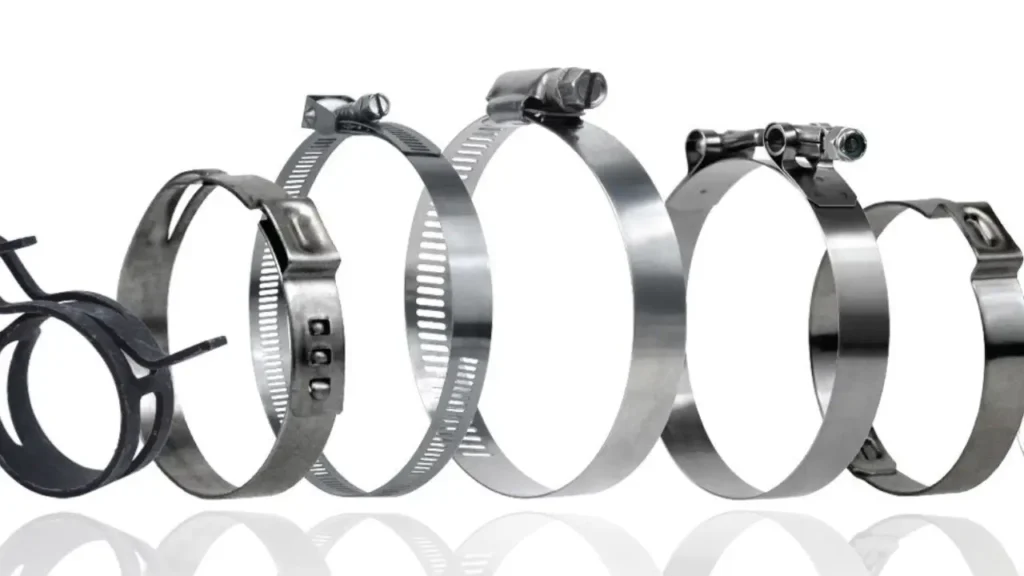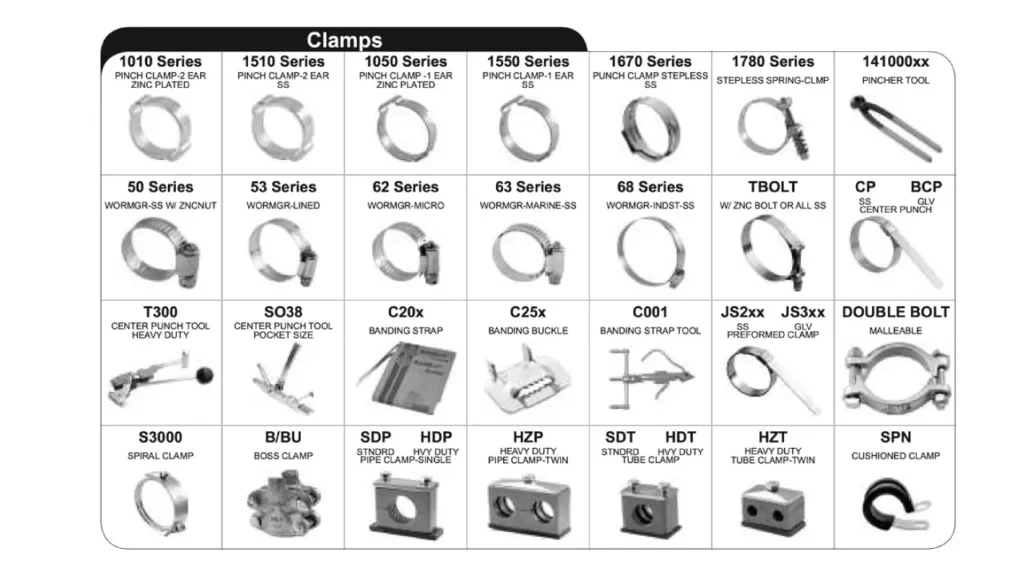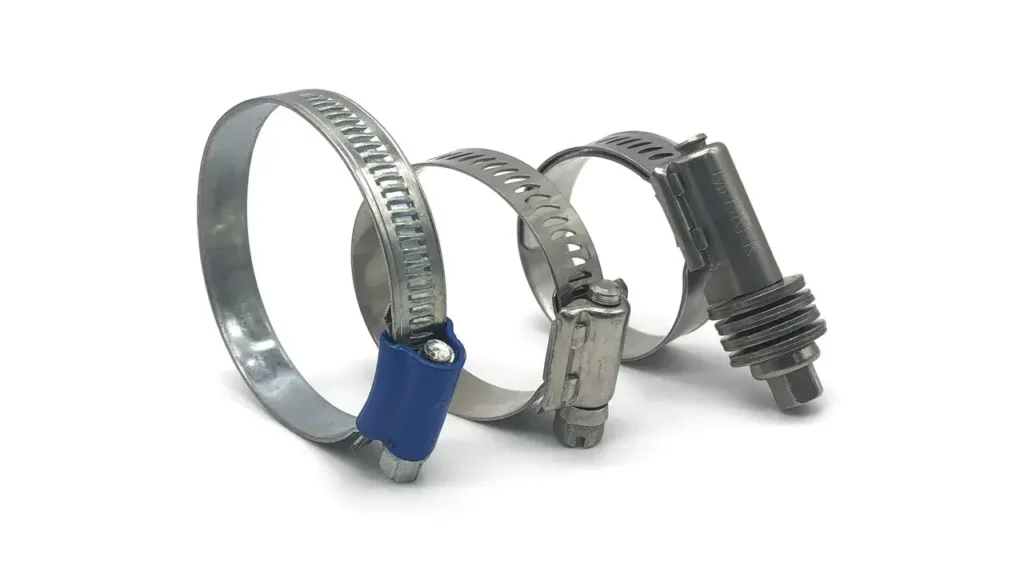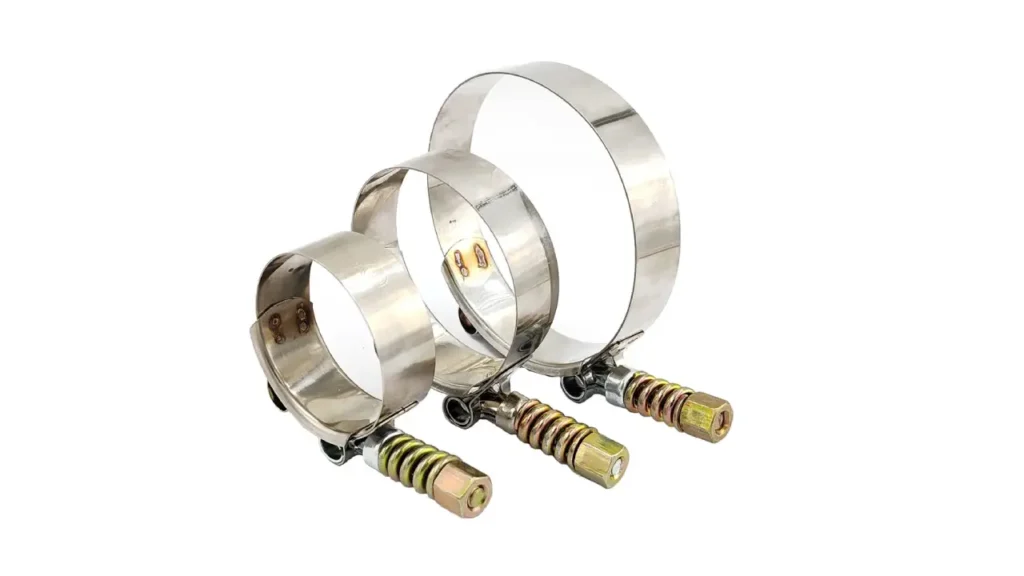Selecting the right hydraulic hose clamp is crucial for ensuring secure and leak-free connections in hydraulic systems. These clamps play a vital role in preventing hose slippage and maintaining system integrity under high pressure and dynamic conditions. Understanding the various types of hydraulic hose clamps and their specific applications is essential for optimal performance and safety.
This guide will walk you through the different types of hydraulic hose clamps, their characteristics, and how to choose the most suitable option for your hydraulic applications. We’ll explore factors like pressure ratings, material compatibility, and installation considerations to help you make informed decisions and maintain a reliable hydraulic system.
What Are Hydraulic Hose Clamps

Hydraulic hose clamps are essential components used to secure hydraulic hoses to fittings, pipes, or other connection points. They provide a reliable and leak-free connection, preventing hoses from slipping or disconnecting under the high pressures and dynamic forces common in hydraulic systems. These clamps are designed to withstand the demanding conditions of hydraulic applications, including vibrations, temperature variations, and fluid pressures.
The primary function of hydraulic hose clamps is to maintain a secure and stable connection, ensuring the integrity of the hydraulic system. Different clamp types are available, each suited for specific applications and pressure ratings. Choosing the right clamp is crucial for preventing leaks, minimizing downtime, and ensuring the safe and efficient operation of hydraulic equipment. Incorrect clamp selection can lead to system failures and potential safety hazards.
Hydraulic Hose Clamp Types

Securing hydraulic hoses effectively is crucial for preventing leaks and ensuring system reliability. Hydraulic hose clamps play a vital role in maintaining these connections. Understanding the various types and their specific applications is essential for optimal performance. We will walk you through the types of hydraulic hose clamps.
Hydraulic Hose Quick Release Clamps

Hydraulic hose quick release clamps are designed for applications requiring frequent hose connections and disconnections. They feature a lever or cam mechanism that allows for rapid installation and removal without tools. This design is particularly useful in environments where hoses need to be changed or serviced frequently, such as in mobile equipment or temporary hydraulic setups.
Features: They offer tool-free operation, rapid installation and removal, and are available in various sizes and materials. The lever or cam mechanism ensures a secure and tight connection. These clamps are designed to minimize downtime and enhance operational efficiency.
Benefits: They significantly reduce setup and maintenance time, improve operational efficiency, and minimize the risk of damage to hoses and fittings during frequent changes. They provide a reliable connection while allowing for quick adjustments.
Applications: They are commonly used in mobile hydraulic systems, test benches, fluid transfer applications, and any setting where hoses are frequently changed or serviced.
Hydraulic Hose Band Clamps
Hydraulic hose band clamps, also known as strap clamps, consist of a metal band that encircles the hose and a tightening mechanism. They are versatile and can accommodate a wide range of hose sizes and types. The tightening mechanism, usually a screw or bolt, allows for adjustable clamping force, ensuring a secure connection.
Features: They are adjustable to fit various hose diameters, available in different materials (e.g., stainless steel, carbon steel), and offer a wide range of clamping force. Their design allows for easy installation and removal.
Benefits: They provide a cost-effective solution for securing hoses, offer flexibility in sizing, and ensure a strong and reliable connection. They are suitable for applications with varying hose sizes and pressure requirements.
Applications: They are widely used in automotive, industrial, and marine applications for securing hoses in low to medium-pressure systems. They are suitable for applications where flexibility in sizing is essential.
Hydraulic Hose Ear Clamps
Hydraulic hose ear clamps, also known as Oetiker clamps, are designed for permanent or semi-permanent hose connections. They feature one or more “ears” that are crimped using a specialized tool to secure the hose. The crimping action provides a 360-degree seal, ensuring a tight and reliable connection.
Features: They provide a 360-degree seal, offer tamper-proof connections, and are available in various materials and sizes. They are designed for permanent or semi-permanent installations.
Benefits: They offer a reliable and leak-free connection, provide consistent clamping force, and are resistant to vibrations and temperature variations. They are suitable for applications requiring a permanent seal.
Applications: They are commonly used in automotive, industrial, and medical applications for securing hoses in low to medium-pressure systems. They are ideal for applications requiring a permanent or semi-permanent seal.
Hydraulic Hose Worm Gear Clamps
Hydraulic hose worm gear clamps are among the most common types of hose clamps. They consist of a screw that engages with a slotted band, allowing for adjustable clamping force. The screw mechanism provides a reliable and adjustable connection, making them suitable for various applications.
Features: They offer adjustable clamping force, are easy to install and remove, and are available in various materials and sizes. The screw mechanism allows for precise adjustments.
Benefits: They provide a versatile and cost-effective solution for securing hoses, offer flexibility in sizing, and ensure a reliable connection. They are suitable for a wide range of applications.
Applications: They are widely used in automotive, industrial, and household applications for securing hoses in low to medium-pressure systems. They are suitable for general-purpose applications.
Hydraulic Hose T-Bolt Clamps

Hydraulic hose T-bolt clamps are designed for high-pressure and high-vibration applications. They feature a T-bolt and nut mechanism that provides a strong and reliable connection. The robust design ensures that the clamp can withstand extreme conditions.
Features: They offer high clamping force, are resistant to vibrations and high pressures, and are available in various materials and sizes. The T-bolt mechanism ensures a secure and durable connection.
Benefits: They provide a reliable and leak-free connection in demanding applications, offer consistent clamping force, and are resistant to extreme conditions. They are suitable for heavy-duty applications.
Applications: They are commonly used in heavy-duty industrial, automotive, and marine applications for securing hoses in high-pressure and high-vibration systems. They are ideal for turbocharger connections and exhaust systems.
Hydraulic Hose Spring Clamps
Hydraulic hose spring clamps use a spring mechanism to maintain constant tension on the hose. They are designed for applications where temperature variations cause hose expansion and contraction. The spring mechanism compensates for these changes, ensuring a consistent and reliable connection.
Features: They offer constant tension, compensate for temperature variations, and are available in various sizes and materials. The spring mechanism ensures a self-adjusting connection.
Benefits: They provide a reliable and leak-free connection in dynamic temperature environments, offer consistent clamping force, and minimize the risk of leaks due to hose expansion and contraction. They are suitable for applications with temperature fluctuations.
Applications: They are commonly used in automotive and industrial applications for securing hoses in cooling systems and other temperature-sensitive applications. They are ideal for applications with temperature variations.
Hydraulic Hose Wire Clamps
Hydraulic hose wire clamps consist of a single or double wire that is formed into a loop and secured with a bolt or screw. They are suitable for low-pressure applications and provide a simple and cost-effective solution for securing hoses.
Features: They offer a simple and cost-effective design, are easy to install and remove, and are available in various sizes and materials. The wire loop provides a secure connection.
Benefits: They provide a reliable connection in low-pressure applications, offer flexibility in sizing, and are easy to use. They are suitable for general-purpose applications.
Applications: They are commonly used in automotive, industrial, and household applications for securing hoses in low-pressure systems. They are ideal for general-purpose applications.
Hydraulic Hose V-Band Clamps
Hydraulic hose V-band clamps are designed for high-temperature and high-pressure applications. They consist of a V-shaped retainer and a quick-release mechanism. The V-shaped retainer provides a strong and reliable connection, while the quick-release mechanism allows for easy installation and removal.
Features: They offer high clamping force, are resistant to high temperatures and pressures, and provide a quick-release mechanism. The V-shaped retainer ensures a secure and durable connection.
Benefits: They provide a reliable and leak-free connection in demanding applications, offer consistent clamping force, and are resistant to extreme conditions. They are suitable for high-performance applications.
Applications: They are commonly used in turbocharger connections, exhaust systems, and other high-performance applications. They are ideal for applications requiring a quick-release mechanism.
Hydraulic Hose Pinch Clamps
Hydraulic hose pinch clamps are simple and cost-effective clamps used for low-pressure applications. They consist of a metal strip that is pinched or crimped to secure the hose. They are easy to install and remove, making them suitable for temporary or light-duty applications.
Features: They offer a simple and cost-effective design, are easy to install and remove, and are available in various materials and sizes. The pinching mechanism provides a secure connection.
Benefits: They provide a reliable connection in low-pressure applications, offer flexibility in sizing, and are easy to use. They are suitable for general-purpose applications.
Applications: They are commonly used in automotive, industrial, and household applications for securing hoses in low-pressure systems. They are ideal for general-purpose applications.
Hydraulic Hose Swivel Clamps
Hydraulic hose swivel clamps are designed for applications where hoses need to rotate or move. They feature a swivel mechanism that allows the hose to move freely while maintaining a secure connection. This design is particularly useful in applications with dynamic movement.
Features: They offer a swivel mechanism, allow for hose movement, and are available in various sizes and materials. The swivel mechanism ensures a flexible connection.
Benefits: They provide a reliable connection in dynamic applications, offer flexibility in hose movement, and minimize the risk of damage to hoses and fittings. They are suitable for applications with movement.
Applications: They are commonly used in robotic systems, hydraulic arms, and other applications with dynamic movement. They are ideal for applications requiring hose flexibility.
How to Choose the Best Hydraulic Hose Clamps
Selecting the best hydraulic hose clamps involves considering several factors to ensure a secure and reliable connection. The right clamp will prevent leaks, minimize downtime, and enhance the overall safety and efficiency of your hydraulic system. It’s crucial to assess the specific requirements of your application, including pressure, temperature, and environmental conditions, to make an informed decision.
Key considerations include the clamp’s material, size, and design. The material should be compatible with the environment and fluid being conveyed, while the size must match the hose’s outer diameter. The design should provide adequate clamping force and be suitable for the application’s demands, whether it requires frequent adjustments or a permanent seal.
- Pressure Rating: Ensure the clamp can withstand the maximum operating pressure of the hydraulic system.
- Temperature Range: Select clamps that can operate within the system’s temperature range to prevent material degradation.
- Material Compatibility: Choose clamps made from materials that are resistant to the hydraulic fluid and environmental conditions.
- Hose Size and Type: Match the clamp size to the hose’s outer diameter and consider the hose’s material and construction.
- Application Requirements: Consider factors like vibration, movement, and frequency of hose changes to select the appropriate clamp design.
Conclusion
In conclusion, selecting the appropriate hydraulic hose clamp is crucial for ensuring system integrity and preventing costly failures. Understanding the various clamp types, their applications, and their resistance to environmental factors ensures a secure and leak-free hydraulic system. Proper selection minimizes downtime and enhances overall system safety.
Careful consideration of factors like pressure, temperature, and hose material guides you to the optimal clamp choice. Regular inspections and maintenance of clamps are essential for extending their lifespan and maintaining system reliability. Knowing the clamp’s limitations and strengths ensures your hydraulic systems function optimally.
For a comprehensive range of high-quality hydraulic hoses and expert guidance on clamp selection, choose Kingdaflex. We offer wholesale solutions with diverse sizes and materials to meet your specific project needs. Contact us today to request a quote and ensure your hydraulic systems operate with maximum efficiency and safety.

